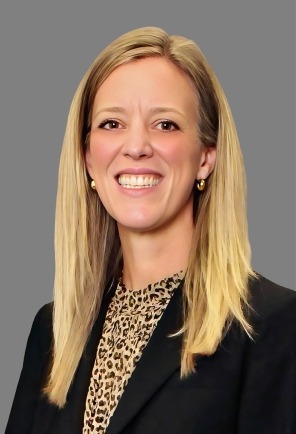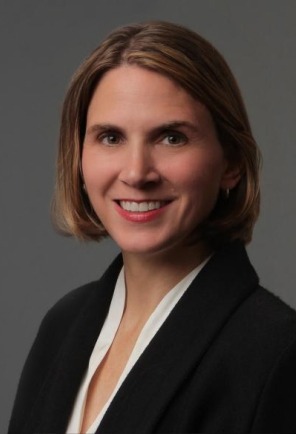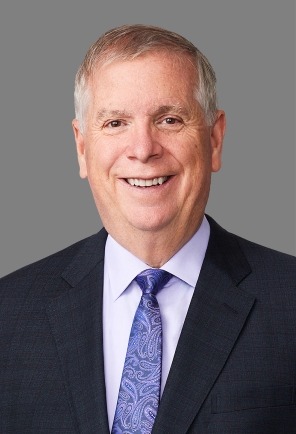Stabilizing and Transforming Education Organizations
When faced with financial, operational, and academic challenges, leaders of education organizations have a mandate to put student outcomes at the center of every decision. A&M provides the financial, operational, and academic insight needed to align critical resources with the most important student needs. As education experts, our team support leaders in implementing solutions, which turn analysis and insight into positive student outcomes.
Responding to Crisis: Rebuilding New Orleans Public Schools
This is a mess,” one headline screamed. “In the dismal gallery of failing urban school systems, New Orleans’ may be the biggest horror of them all” another story blasted. Even before hurricane forces tragically ravaged New Orleans, the city’s public school system was in abysmal condition. Years of financial and operational mismanagement coupled with endemic corruption and abuse had yielded a system in utter chaos, woefully underserving its 56,000 school children. The situation was so bad few thought it could get any worse. Then Katrina hit.
Through the actions of the Louisiana Department of Education and the local school board and the efforts of Alvarez & Marsal, in 2005 the city’s public school system was rebuilt, reclaimed and reinvented – charting a course towards a bright future.
Facing Intractable Problems
Years of extraordinary dysfunction came to a head in mid-2005 when it became clear the district could not properly account for $71 million in federal funds. State Education Superintendent Cecil Picard recognized drastic action was needed and, together with the Orleans Parish School Board, hired Alvarez & Marsal in July – about six weeks before the start of school – to right the ship.
Given NOPS’ well publicized problems and A&M’s prior experience in turning around the St. Louis Public Schools, a team of more than 30 A&M professionals expected to find a grim picture when they arrived. But nothing could have prepared them for what they discovered.
NOPS did not know how many people it employed. Payroll checks frequently were inaccurate or bounced. The district did not know how many properties it owned or their value. The database used for payroll and finances was badly corrupted. Stipends were improperly monitored, and some employees had been on paid leave for decades. The district had not received a clean audit in several years. The accounting department had no accountants. FBI agents maintained a regular presence at district headquarters following the indictment of several individuals on charges ranging from theft to kickbacks. Schools were filthy and in disrepair, often lacking basic supplies such as blackboards and toilet paper. The district was $450 million in debt. And cash flow analyses showed it would run out of cash in September, just weeks after the start of the 2005 school year.
A Pledge for Transparency
From the outset, the Alvarez & Marsal team, which assumed interim management positions including CRO, COO and CFO, promised to be transparent about their work, to maintain open lines of communication with various constituencies and to build support for the effort.
“I can pledge that I and my team will focus every ounce of energy and experience we have on this job,” Roberti told The Times Picayune. “We will work in partnership with the many caring, dedicated people in the school system and in the community, we will be honest and forthright in our communications and unwavering in our commitment to success for New Orleans’ children.”
Alvarez & Marsal sent out weekly progress reports to more than 100 people, including government officials, board members, business members and community and clergy leaders. They held meetings with teachers at the union’s headquarters and met with principals and other groups. Impressed with the approach, Brenda Mitchell, the president of the United Teachers of New Orleans was quoted as saying “to have a dialogue at this level is unheard of,” noting “it was perhaps the first time she had heard anyone be so honest about plans for the district.”
Stabilizing Finances / Charging Toward First Day of School
As Alvarez & Marsal worked to stabilize the perilous financial situation by gaining control of spending, seeking financing and evaluating and implementing cost-saving measures, the team focused on ensuring that schools would be ready to open in mid-August, a feat that would mark a significant departure from prior years. This meant organizing and overseeing everything from HR to transportation to facilities to supplies to maintenance to security for 117 schools – in only six weeks’ time. But the team knew it was important to set a new tone for the new school year.
Working with urgency, Alvarez & Marsal set up a system to verify employment of every NOPS employee and coordinated the staffing of schools. They made sure books and other supplies were in classrooms. They coordinated 179 bus routes across the city, worked with maintenance vendors to ensure repairs were made and schools were clean, rolling up their sleeves to take care of some of it themselves. To the disbelief of many, the team even made sure toilet paper was in every bathroom – a rarity in the past. They also set up a hotline for questions from personnel on the first day and had SWAT teams on hand to solve problems on the spot. But the phones barely rang. Schools opened on August 18th in good shape without a major hitch for the first time in years.
The effort – summed up by the day-after newspaper headline “First Day of School Goes by the Books” – drew rave reviews. One principal was quoted as saying: “I emailed [A&M] on Monday and on Tuesday someone’s walking in the building with my supplies. We’re getting a whole new response.” Another principal reported having no need to call the hotline, because she had received a response in “record time” when she requested furniture at the last minute.
The exuberance, however, was short-lived. Less than two weeks later, Hurricane Katrina roared ashore and changed everything.
“Spinning on A Dime”: Crisis Management in The Wake of Hurricane Katrina
Overnight, Alvarez & Marsal went from financial managers to crisis managers. Two days after the levees failed, the team was in Baton Rouge, meeting with state Department of Education officials, talking by phone to board members and beginning to assess the damage and plan for the recovery. To provide information to parents, employees and the community, a call center and new web site were immediately set up and maintained for several months, continually providing updated information.
To ensure district employees would receive paychecks, Alvarez & Marsal, together with NOPS staff, went back to New Orleans just days after the storm to rescue the back-up payroll tapes. With the city mostly deserted and police patrolling with automatic weapons at the ready, the Alvarez & Marsal team, together with NOPS IT staff, enlisted the assistance of a tactical police team to breach the district’s heavily damaged headquarters building and retrieve the back-up Oracle tapes. They quickly contracted with IBM to stand up the system at a disaster recovery center in New York and made arrangements to issue payments. Since most banks in the area were not functioning, and the population was completely dispersed, the team worked with Western Union to develop a mechanism to distributing the funds.
At the same time, Alvarez & Marsal worked with the Council of the Great City Schools to bring in assistance from school districts around the country to begin assessing damage to NOPS property. With more than 80% of the city flooded, nearly every school sustained damage and only 13 of the district’s 300 school buses remained. Working with the school board, the team developed a plan for repairing and reopening schools.
Alvarez & Marsal also led the way in working with the Federal Emergency Management Agency (FEMA) to assess the damage, school-by-school and get buildings into condition to be opened and occupied. At the same time, A&M was managing cash flow, and working with insurance companies, FEMA and other state and federal entities to secure the sources of funding necessary to fuel this rebuilding program, with estimates of damage topping $800 million.
Commenting on the firm’s response in the wake of the storm, Grover Austin, the former legislative auditor who was hired by the state to oversee A&M’s contract, said months later: “I don’t know what we would have done without them. They were able to spin on a dime and refocus.”
New Public School Landscape Takes Shape
If there was one silver lining in the Katrina tragedy, it was that the public schools in New Orleans had a clean slate and could start from scratch with a new structure. As a result of state legislation allowing for the takeover of a majority of the schools and the school board’s decision to charter a number of others, the new public school system included a few schools run by the Orleans Parish School Board, others run by the state as part of a Recovery School District, and others operated as charter schools, including several schools run by the Algiers Charter Schools Association.
As schools began to re-open in late November and early December of 2005, it sent a powerful signal to the world that New Orleans was on its way back and gave residents hope that this is a city to which they could return.
Financial Problems Exacerbated
While working to help re-open schools, Alvarez & Marsal continued to deal with the ongoing challenge of managing the precarious finances of NOPS. In the aftermath of Katrina, the district was left with virtually all its former financial obligations, including approximately $270 million in bond debt, but with dramatically reduced revenues, with the local tax base largely gone. On top of that, health insurance and unemployment insurance obligations added millions of dollars in expenses to the budget.
As other entities in the region defaulted on their debt, the district did not. Through the firm’s oversight, the district made all its bond payments and managed cash in a way that bought much-need time – during which the team was able to obtain assistance from the federal government and the state in the form of a Community Disaster Loan, Tax Credit Financing and a Community Development Block Grant. At the same time, members of the school board mounted a successful campaign to get the Legislature to provide some relief to NOPS retirees and to allow the district to defer payment of its unemployment insurance obligations to the state. These measures, together with continued tight fiscal management and the recruitment of a new permanent CFO enabled NOPS to remain solvent through extremely precarious circumstances.
Facing Realities of a New District: Workforce, Benefits, Technology
In the wake of Katrina and the passage of legislation creating the Recovery School District, NOPS was dramatically reduced in size. With only a few schools under OPSB control, the district could not continue to employ over 7,000 former NOPS employees. Many of these former employees would likely be able to seek employment in state-run or charter schools, but they could no longer remain as active NOPS employees.
Layoffs, though heart-wrenching and emotionally difficult, became a necessity. While the process was highly complex and labor intensive, requiring sophisticated human resources capabilities, Alvarez & Marsal was able to meet NOPS’ obligations in the face of repeated court challenges. Changes in workforce, in turn, brought additional challenges in the benefits arena, particularly in the form of health insurance for retirees. With very little time to implement a new program, the team developed and put in place a new self-insured plan.
The reconfigured school system also created technology challenges. The Oracle system, which had been improperly implemented to begin with, was not an appropriate option for the much smaller school system. Alvarez & Marsal’s IT staff set up a new IT system for all of NOPS, outsourced the hosting of servers, developed a far more reliable disaster recovery system, re-established the IT capabilities of each NOPS school and led the effort to recruit a new head of IT.
Moving Forward
No one could have imagined the year experienced by the New Orleans Public Schools in 2005. Yet even in the face of tremendous obstacles, the school board never surrendered to despair, never gave up. In the wake of one of the worst natural disasters in this nation’s history, the district managed to keep moving forward and showed real commitment to the children of New Orleans and the future of the school system.
Alvarez & Marsal worked to ensure that finances were sufficiently stable to allow the district to continue to function in the short-term and implemented a plan for managing and reducing, over a five-year period, more than $400 million in accrued liabilities, including significant bond debt, and eliminating the $100 million book balance deficit. The team developed a capital plan for improving school facilities and for dealing with problems created not only by Katrina, but by years of deferred maintenance, and also built a strong foundation for dealing with FEMA and insurance companies. They worked on behalf of the school board with federal, state and local officials to obtain a Community Disaster Loan, Community Development Block Grant, and Tax Credit financing that provided temporary relief for the district during this crisis. They also put in place a purchasing and procurement process that prevents abuse; HR, personnel and payroll departments that maintain position control; and an IT system that is user friendly, facilitates financial and other operations and contains controls that prevent fraud or abuse.
Alvarez & Marsal’s goal was to leave the district well on its way to being able to focus more of its energies on education and less on financial and operational crises.



